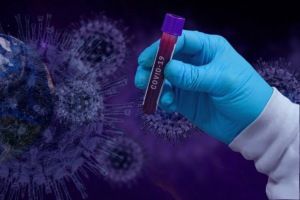News
Pakistani community disproportionately represented in Copenhagen coronavirus statistics
This article is more than 5 years old.
The minority group also accounts for almost half of all coronavirus cases in the western suburbs

AI can help predict the mortality odds (photo: Pixabay)
According to new figures from the State Serum Institute, Copenhagen’s Pakistani community makes up a disproportionately high share of recently confirmed coronavirus cases in the capital.
The figures (here in Danish) showed that 24 percent of residents with a Pakistani background accounted for new cases last week.
Additionally, the group accounts for almost half (46 percent) of cases in eight municipalities – Rødovre, Hvidovre, Glostrup, Brøndby, Albertslund, Vallensbæk, Ishøj, Høje-Taastrup – in the western suburbs.
“It’s believed there have been some festive gatherings or an event that covers the entire Copenhagen region, during which an infection chain has been initiated,” Copenhagen’s mayor, Frank Jensen, told DR Nyheder.
READ ALSO: Government ushers in nightlife restrictions in Copenhagen as coronavirus cases surge
More vulnerable group
While Jensen seemed to suggest that the Pakistani community itself was at fault, Urfan Ahmed, a doctor and spokesperson for the community’s own coronavirus task force, indicated otherwise.
Ahmed contended that Pakistanis are disproportionately represented because they are tested more frequently and many work in the transportation and health sectors – making them vulnerable to being exposed to the coronavirus.
Furthermore, cultural family dynamics also play a role, Ahmed maintained.
“We also know that non-western descendents with children have eight times more people in the same household compared to ethnic Danes,” he told DR Nyheder.
“So three generations under one roof, which make it easier for people who have been infected in society to come home and infect their families.”
The government has produced posters and videos in a number of different languages, including Arabic, Kurdish, Farsi, Somali, Turkish and Urdu, about how to best protect yourself against the coronavirus.











































